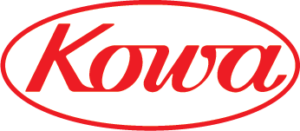Fast drying polyisocyanate is based on the widely used aliphatic hexamethylene-1,6-diisocyanate (HDI) – enhanced to dry polyurethane faster. These are primarily used for high performance, fast drying polyurethane applications to improve weatherability and UV/chemical resistance.
PPR F420 is an aminofunctional co-reactant for polyisocyanates used for the formulation of high-solids, two-component polyurethane topcoats and solvent-free coatings. PPR F420 is also useful when reacted with -NCO functional HDI trimmer showing longer gelling time and excellent yellow resistance.
t-BMA acts as a reactive monomer in order to produce other monomers/substances. t-BMA forms homopolymers and copolymers. tert-Butyl Methacrylate (t-BMA) is also a very useful feedstock for chemical syntheses, because it readily undergoes addition reactions with a wide variety of organic and inorganic compounds.
NK Ester DCP is a low viscosity difunctional acrylate monomer that is polymerized by free radicals. It can be used in a variety of UV and Electron Beam cured applications where flexibility and adhesion are required. NK Ester DCP also demonstrated good film toughness and weathering characteristics.
TETRAX (Polyisobutylene) makes effective use in a variety of applications requiring excellent stability, adhesiveness, low temperature properties, weather resistance, ozone resistance, water resistance, transparency and applications requiring an extended use such as with removable labels.
HDI-biuret is a polyisocyanate based on the widely used aliphatic hexamethylene-1,6-diisocyanate (HDI). These are primarily used for high performance coatings applications to improve weatherability and UV/chemical resistance.
ACTFLOW is a non-solvent functional and reactive acrylic polymer of low-molecular weight that has come out of molecular weight control technology. Due to environmentally sound characteristics as a non-solvent liquid polymer and excellent normal-temperature fluidity, ACTFLOW is recommended as a plasticizer replacement, modifying agent and additive agent.
CHMA forms homopolymers and copolymers. Copolymers of DHMA can be prepared with acrylic acid and its salts, amides and esters, and with methacrylates, acrylonitrile, styrene, butadiene, unsaturated polyesters and drying oils, etc. CHMA is also a very useful feedstock for chemical syntheses, because it readily undergoes addition with a wide variety of organic and inorganic compounds.
HPA is a hydroxyl functional acrylic monomer used in high performance coating applications. HPA can be used to attach hydroxyl groups to an acrylic polymer backbone to create sites for reaction with a variety of cross-linking agents. Compared with hydroxyalkyl methacrylates, HPA allows faster curing cycles and reduced baking temperatures. It can also be formulated at […]
Coated grades aluminum paste are produced by applying special acrylic resin coatings to the design-grade microleafs. This heightens chemical resistance, voltage resistance, adhesion, and other properties. In each grade, the resin types and thickness provide a specific combination of superior properties, functions and performance.
Glycidyl Methacrylate is a unique monomer that allows chemists the ability to put oxirane or epoxy groups into acrylic resins, thereby allowing a variety of further cross-linking or curing reactions. GMA is used in UV coatings, inks, adhesives, photos resists, ion exchange resins, chelating resins, photosensitive resins and dental applications.
Coated grades aluminum paste are produced by applying special acrylic resin coatings to the design-grade microleafs. This heightens chemical resistance, voltage resistance, adhesion, and other properties. In each grade, the resin types and thickness provide a specific combination of superior properties, functions and performance.
PPR F520 is an aminofunctional co-reactant for polyisocyanates useful for the formulation of high-solids, two-component polyurethane topcoats and solvent-free coatings. PPR F520 can be reacted with -NCO functional HDI trimmer resulting in a longer gelling time and excellent yellowing resistance.
HEA is a hydroxy functional acrylic monomer which can be used in a variety of ways to produce resins that are useful in high performance coating applications. Using typical methods for the polymerization of ethylenically unsaturated monomers, HEA can be used to attach hydroxy groups to an acrylic polymer backbone. The pendant hydroxyl groups can then […]
RUVA-93 copolymerizes efficiently with a variety of monomers, such as methacrylic, styrenic, and acrylonitrile monomers, thus providing permanent placement of the benzotrizole in the polymer. The advantages associated with a UV stabilizer bonded to a polymer backbone over the typical “additive” stabilizers include the permanence of the stabilizer in the resin, improved compatibility even in the […]
Low Viscosity HDI-polyisocyanates Polyisocyanate based on the widely used aliphatic hexamethylene-1,6-diisocyanate (HDI). These are primarily used for high performance coatings applications to improve weatherability and UV/chemical resistance. These low and ultra low viscosity grades have 100% symmetrical chemical structure enabling better performance compared to competitors which have slight biuret contamination. The higher quality is great for […]
